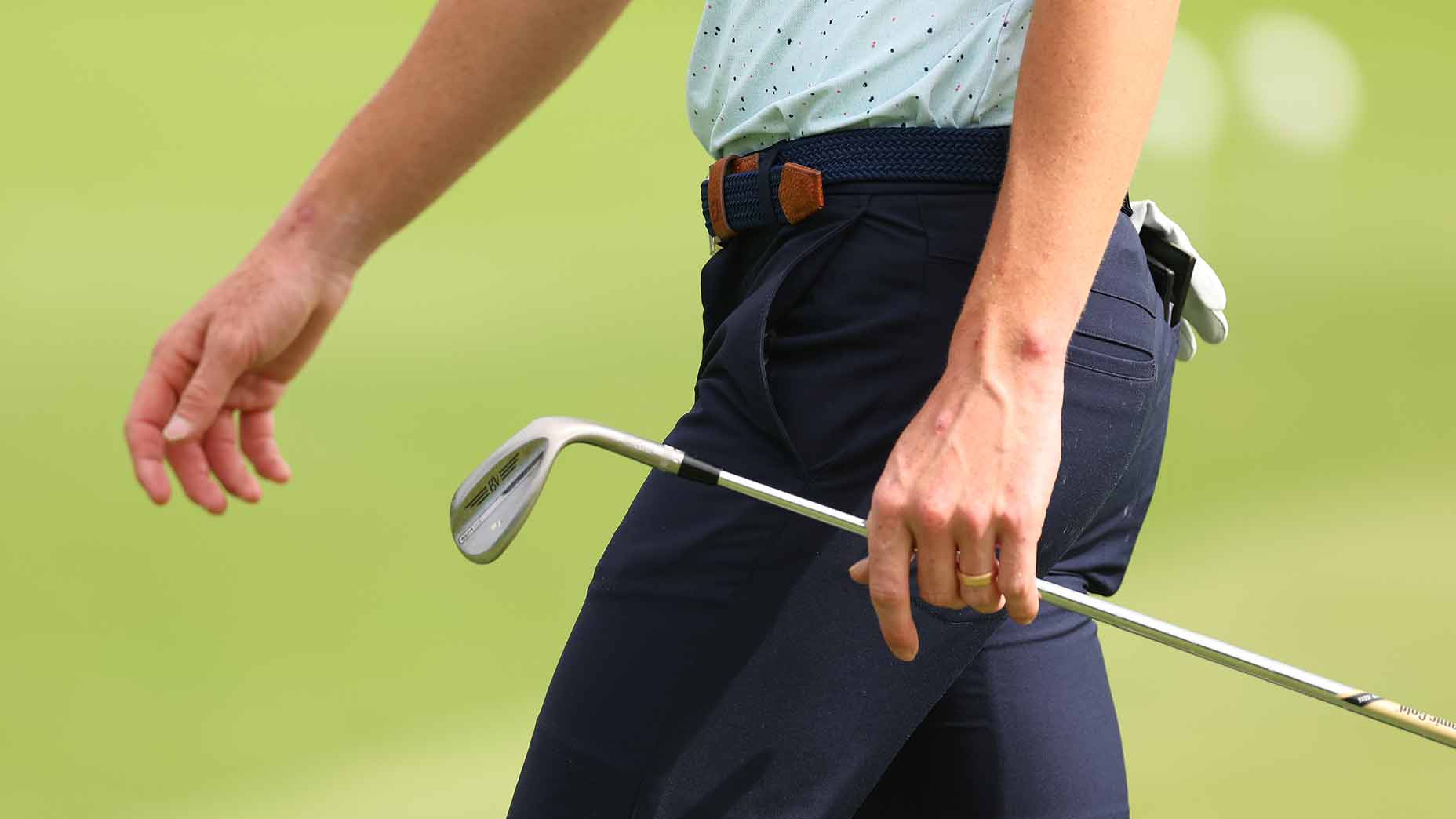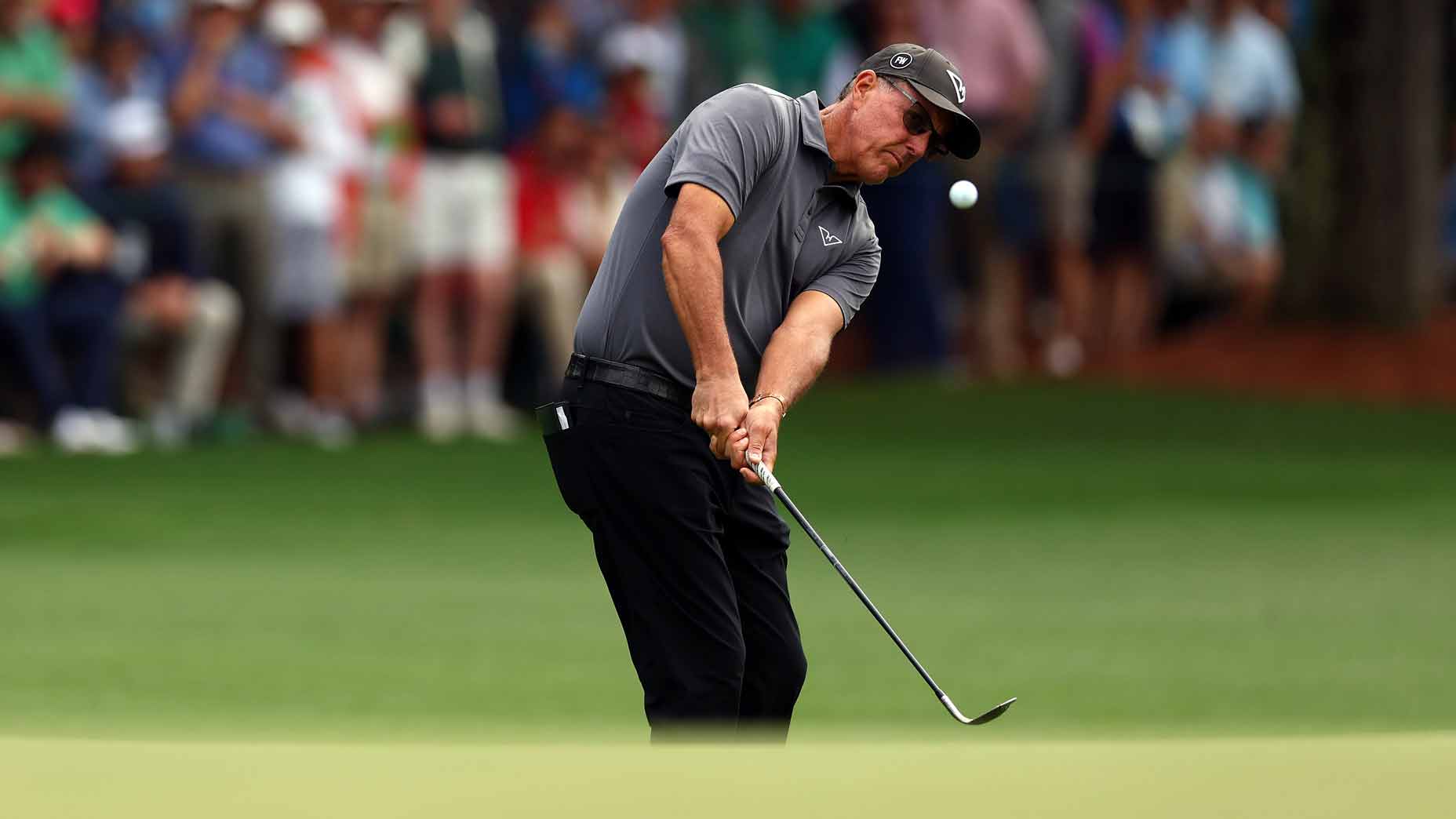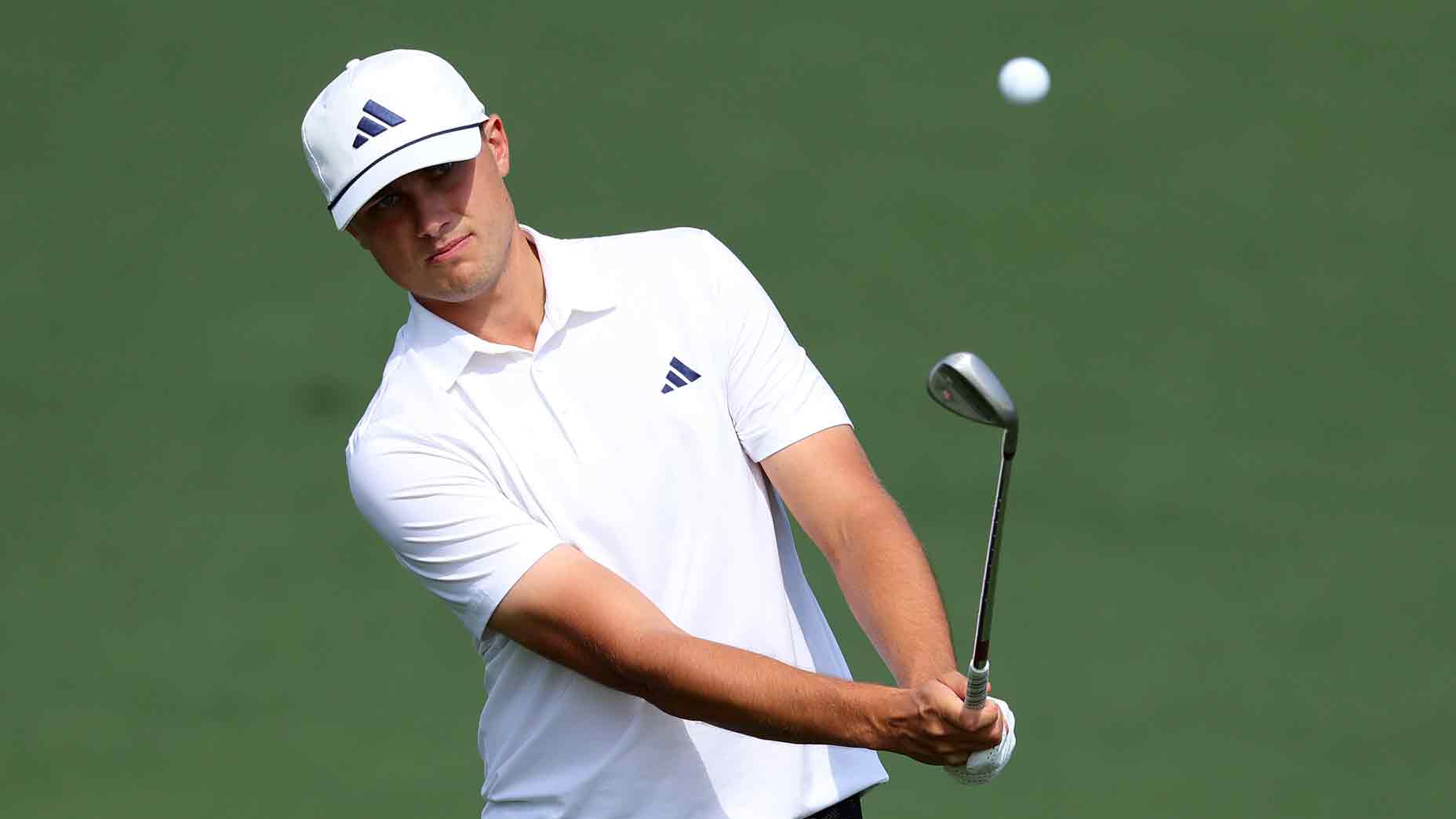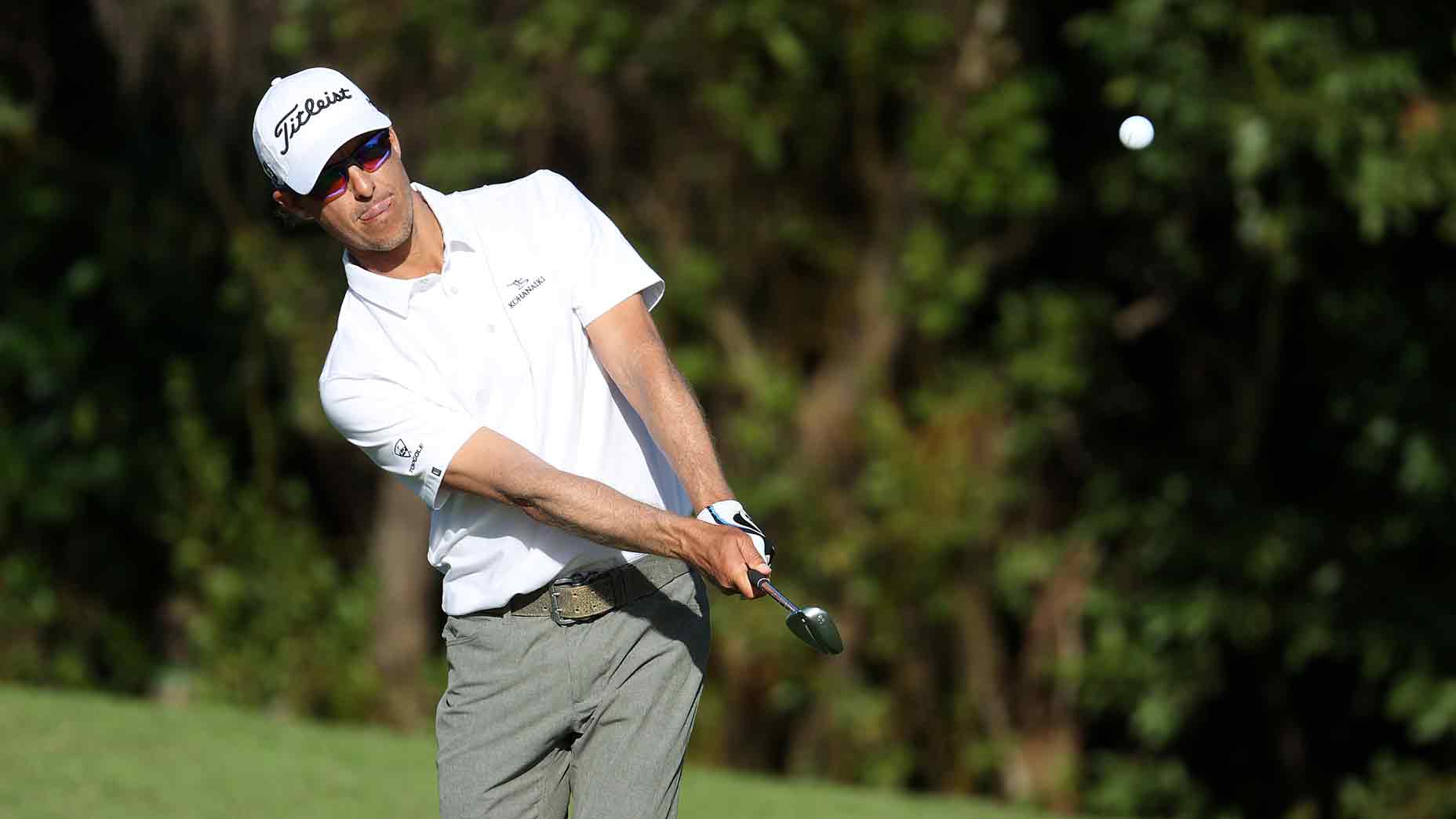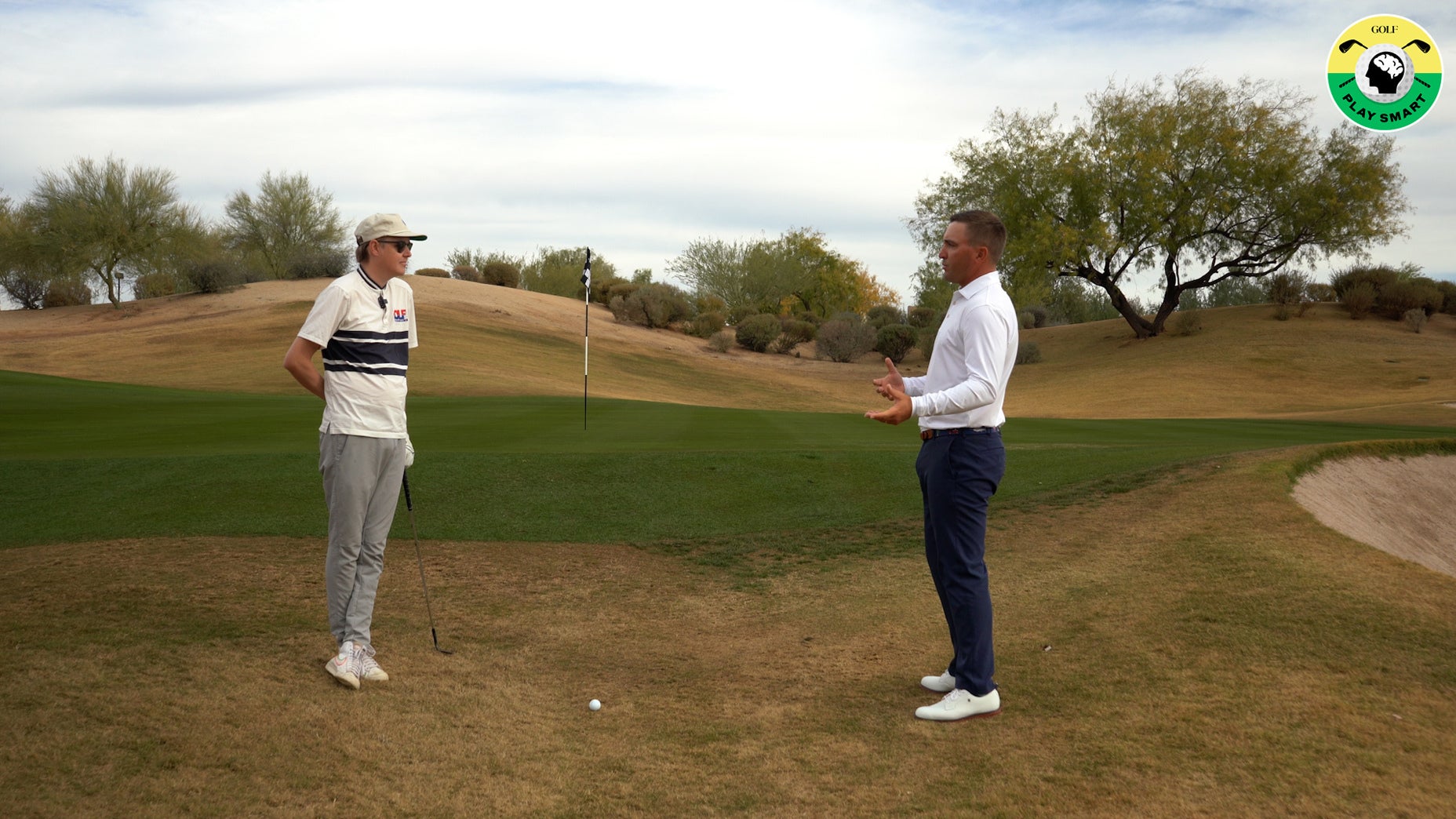 Explaining what ‘short-sided’ means — and why you need to avoid it
Explaining what ‘short-sided’ means — and why you need to avoid it
Top 100 Teacher: What you can learn from the U.S. Open’s bunkers
Pebble Beach has numerous ways to protect the players from scoring as well as they might like at thee 2019 U.S. Open.
The tight fairways, the rough, the small greens and of course, the bunkers.
But when you consider the long, thick rough around the greens, leaving your ball in the sand is actually a spot players don’t mind being.
Not only are the players very good out of the bunker and splashing the sand out of the bunker and onto the green with their full swings, but they are also very good at using their club selection, face angle, path, different releases and pace of swing to control their distances.
How can we all learn from what they do so well?
The best players in the world take plenty of sand and they almost always take a full swing. It’s something that can help many golfers at home: Even though you are very close to your target in the case of most green side bunker shots, it is almost always a full swing. The first commitment has to be to taking sand and once that happens, then the full swing is a much easier to commit to.
The set up is the key for a green side bunker with the ball position forward in the stance to help the club enter the sand before the ball, stay in the sand under the ball and exit well after the ball. Digging your feet into the sand also helps lower the bottom of the swing.

Take some time and watch the best players in the world almost always taking a full swing in the green side bunker. If they need a full swing, you absolutely do.
The fairway bunker is almost all cases is a full swing as well. The difference is the contact point.
Tour players are great at ball and then turf contact on their shots on the ground and this serves them very well in fairway bunkers. Often their ball position is farther back in their stances to enable them to hit the ball before the sand, but they do take sand and they do take a full swing.
We can learn from them because they are taking sand in most cases, but this contact with the sand happens after the ball.
Once again the set up the key for a fairway bunker shot.
The ball position is farther back in the stance to help the club contact the ball before the sand. A more narrow stance can also help too much lower body motion to help solid contact with the ball first.
ADVERTISEMENT
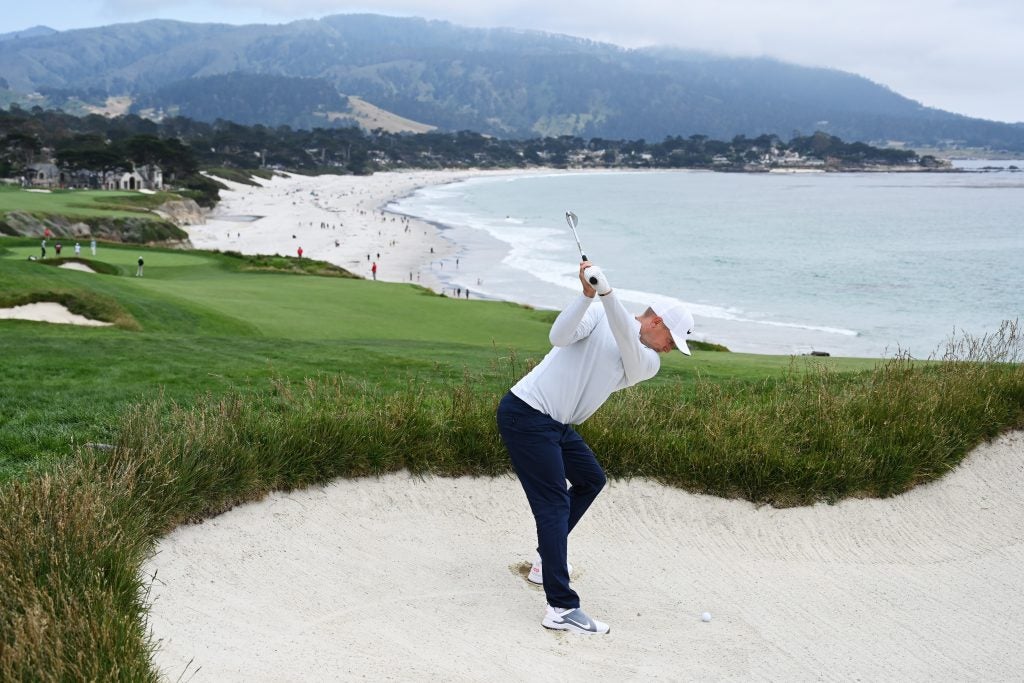
A full swing with a full swing pivot is important. The back heel should come off the ground to help the club stay low after the ball and then contact the sand.
Bunker play can often be one of the parts of the game that takes the longest to learn, but there is certainly an opportunity to learn from the best players in the world.
Take a full swing and change your ball position to adjust the contact point with the sand. Ball position should be forward when you want to hit the ball shorter in distance and ball back when you need the distance of a fairway bunker.
ADVERTISEMENT


